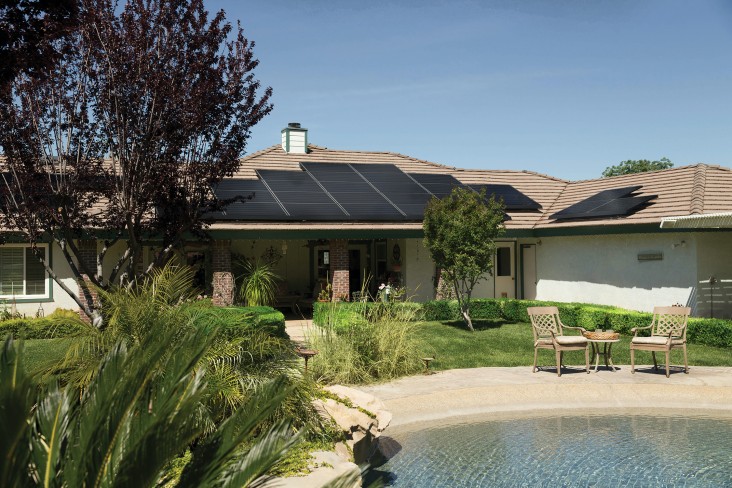Trees can stir up a lot of emotion in people. They provide food and shelter for our birdlife, have many environmental benefits including improving our air and soil quality, and also provide pleasure and amenity value to the public. Where some people see a thing of beauty however, others see an eyesore or a nuisance.
Take for example, the recent case of the Karaka Chainsaw Massacre, where a vandal felled eight pohutukawa trees in the upmarket Auckland suburb of Karaka. The trees were growing on council berms and neighbours were said to be devastated by the wanton act of destruction.
This is an extreme and thankfully rare case, but trees can cause a whole lot of grief between neighbours so it pays to know where you stand when it comes to the law.
Check with your local authority
Trees on other land are quite a challenging situation. First, you've got to work out the status of the land. If it’s council land there will be rules the council requires you to comply with. They have their own policies around trimming and taking out trees so the first step for trees on council land is to talk to council.
It also pays to check if a tree is protected or not. If a tree is protected by the Resource Management Act 1991, it can generally only be removed or trimmed if it’s a risk to someone’s life, health or property.
Talk to your neighbour
The law allows you to cut back branches or roots from neighbours’ trees that are overhanging your property. However, it’s always best to talk to your neighbour to see if you can reach an agreement before you go down the road of a legal process to deal with them.
Court order
If you can’t come to an agreement and a neighbour’s tree is dangerous or is blocking your view or light, you can apply for an order to get the tree removed or trimmed. That will only be granted if it’s fair and reasonable to remove or trim the tree and it is necessary to remove or prevent one of the following problems:
- a risk to someone’s life, health or property
- an unreasonable obstruction of your view
- an unreasonable interference with your ability to grow trees or crops
- an unreasonable interference with your use and enjoyment of your property caused by fallen leaves, flowers, fruit or branches, or because the tree is interfering with light, or
- an unreasonable interference with your drains or gutters caused by fallen leaves and so on, or by the tree’s roots.
The court also has to be satisfied that the hardship caused to you if the tree isn’t trimmed or removed is greater than the hardship trimming or removing would cause your neighbour. So basically, you've got to show that it is better to cut the trees down rather than not.
The court will also take a range of other factors into account including:
- Māori cultural values
- the public interest in maintaining an “aesthetically pleasing” (beautiful or attractive) environment
- the importance of protecting public reserves that have trees
- whether the tree has historical, cultural or scientific significance
- any effect that removing or trimming the tree would probably have on ground stability, the water table or run-off
- whether the problem already existed when you first bought or rented the property. That sole factor won’t prevent the order being made if they think it is appropriate given all the circumstances.
Who pays?
If the Court orders your neighbour to remove or trim a tree on their property, you’ll generally have to pay for the cost of getting the work done. However, the court does have the power to order your neighbour to pay some or all of the costs and to compensate you for any damage to your property while their tree is being removed or trimmed.
Once an order is made your neighbour usually has 20 working days to sort it out. If the neighbour hasn’t done the work within the required time, you can ask the neighbour or the court for permission to go onto their property and do the work on the tree yourself. You’ll then be entitled to recover the full cost of the work from your neighbour.
Trees and power lines
Power companies can require property owners to trim trees back from power lines.
Trimming trees near power lines is dangerous, and you should always contact the power company first. However, legally it’s your responsibility to make sure trees growing from your property keep the right distance away from power lines.
Don’t DIY
The other side of this issue is where a neighbour might decide to solve the problem themselves by picking up a chainsaw or poisoning a tree and that can cause all sorts of legal issues. The owner of trees that have been unlawfully cut down without a court order might argue that you've actually caused damage to their land. You can then be put in the position where you have to compensate them for damage. The key message here is to use the law if you want something done, but don't take it into your own hands because that can come back and bite you.
Feedback, comments and questions are always welcomed – please feel free to email me on janice@aspiringlaw.co.nz.
Janice Hughes is a Director of, and senior legal adviser at, Aspiring Law. Please remember, this information is designed as a general guide, and should not replace specific legal advice on a particular issue.

